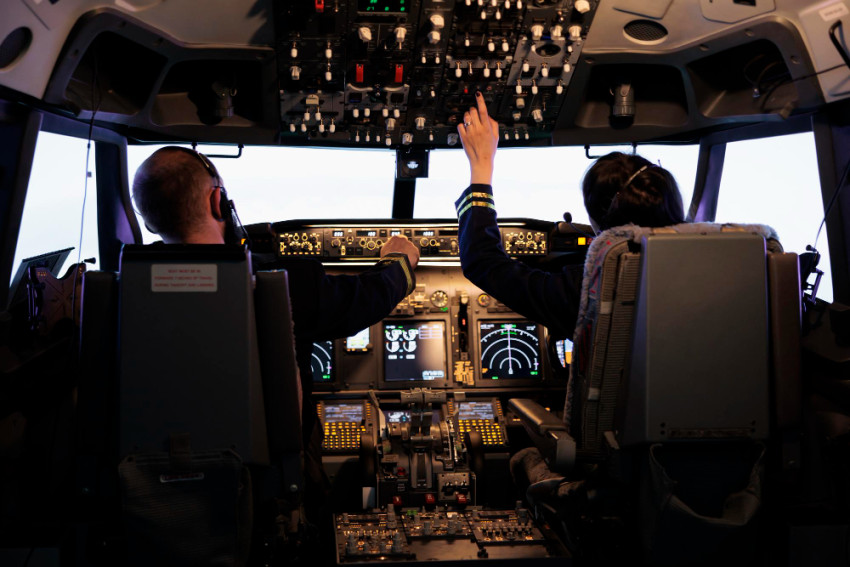
In the ever-evolving landscape of aviation, the integration of electric aircraft is poised to reshape the training programs for tomorrow's pilots. As sustainable aviation gains momentum, Australian aviators can expect an adaption of curriculums to prepare aspiring aviators for the future of electric flight.
Embracing sustainable aviation
The aviation industry will undergo significant transformations in the coming years as we move toward the future, and Australia is taking bold steps toward embracing sustainable practices. Electric aircraft, powered by innovative electric propulsion systems, are emerging as a promising solution to reduce the carbon footprint of aviation. This shift aligns with global efforts to mitigate the environmental impact of air travel.
Advantages of electric aircraft
Electric aircraft bring a host of advantages that make them particularly suitable for pilot training programs. One key advantage is the lower operating costs associated with electric propulsion systems. Flight schools in Australia can benefit from reduced fuel and maintenance expenses, making pilot training more economically viable.
Electric propulsion systems are generally more energy-efficient than traditional engines, resulting in lower operating costs for airlines. Electric motors can be more straightforward in design and require less maintenance, leading to potential cost savings over the lifespan of the aircraft.
Electric propulsion allows for more flexibility in aircraft design. Distributed propulsion systems, where multiple electric motors are distributed across the airframe, enable unconventional aircraft configurations. This can lead to improved aerodynamics, efficiency, and new possibilities for design innovation.
Electric aircraft, at their current capabilities, are particularly well-suited for short-haul, regional and training flights. Their current range limitations are less restrictive for smaller distances, making them suitable for shorter transportation networks.
The development of advanced battery technologies is a key enabler of electric aviation. As energy storage capabilities improve, electric aircraft can achieve longer ranges and compete more effectively with traditional aircraft on various routes.
Electric aircraft tend to be quieter than traditional aircraft, both inside and outside the cabin. The elimination of noisy combustion engines and the smoother operation of electric motors contribute to a more pleasant flying experience for passengers and reduced noise pollution in surrounding communities. Aspiring pilots can experience the thrill of flight without the noise pollution traditionally associated with aviation training.
It's important to note that the electric aviation industry is rapidly evolving, with ongoing research and development efforts aimed at addressing challenges such as battery technology limitations and increasing the efficiency and range of electric aircraft. As the technology matures, electric aircraft are expected to play a more significant role in the future of aviation, offering both environmental and economic benefits.
Challenges and solutions
While the integration of electric aircraft into training programs presents exciting possibilities, it is not without challenges. One primary concern is the current limitations of electric aircraft in terms of range and charging infrastructure. However, these challenges can be addressed by strategically incorporating shorter training flights, optimising routes, and investing in charging infrastructure at key airports and locations.
Additionally, the industry is working collaboratively to advocate for advancements in electric aircraft technology, such as enhanced battery capacities and faster charging solutions. These efforts aim to ensure that electric aircraft become a practical and reliable option for pilot training and commercial use, aligning with the broader sustainability goals of the aviation sector.
Evolving curriculum for electric aviation
Preparing future pilots for electric aviation requires an evolution in the training curriculum. As electric aircraft begin to become more widespread, flight schools will need to enhance programs to encompass the unique aspects of electric aircraft operation, maintenance, and safety protocols. The curriculum will need emphasis on understanding the intricacies of electric propulsion systems, battery management, and the specific considerations associated with electric flight.
As part of training, pilots will need to be educated on the nuances of energy management, which becomes crucial when flying electric aircraft with limited battery capacities. Simulators integrated into training programs will provide a realistic experience of flying electric aircraft, allowing pilots to familiarise themselves with the nuances of electric flight in a controlled environment.
The role of flight schools in Australia
Flight schools in Australia will play a pivotal role in shaping the next generation of pilots who will navigate the skies in electric aircraft. As the industry evolves, these schools can be expected to not only invest in the latest electric aircraft but also collaborate with manufacturers, regulatory bodies, and sustainability organisations to stay at the forefront of this transformative shift.
Whether those in the future are chasing a private pilot license in Australia or entering a cadet pilot program in Australia 10 years from now, they can expect electric aircraft will be a part of their education and training.
Preparing pilots for the future
With the gradual incorporation of these aircraft into training programs, flight schools in Australia will be equipping pilots with the skills and knowledge needed for a future where electric aviation becomes the norm. The training goes beyond the cockpit, instilling a deep understanding of the environmental impact of aviation and fostering a sense of responsibility among future aviators.


